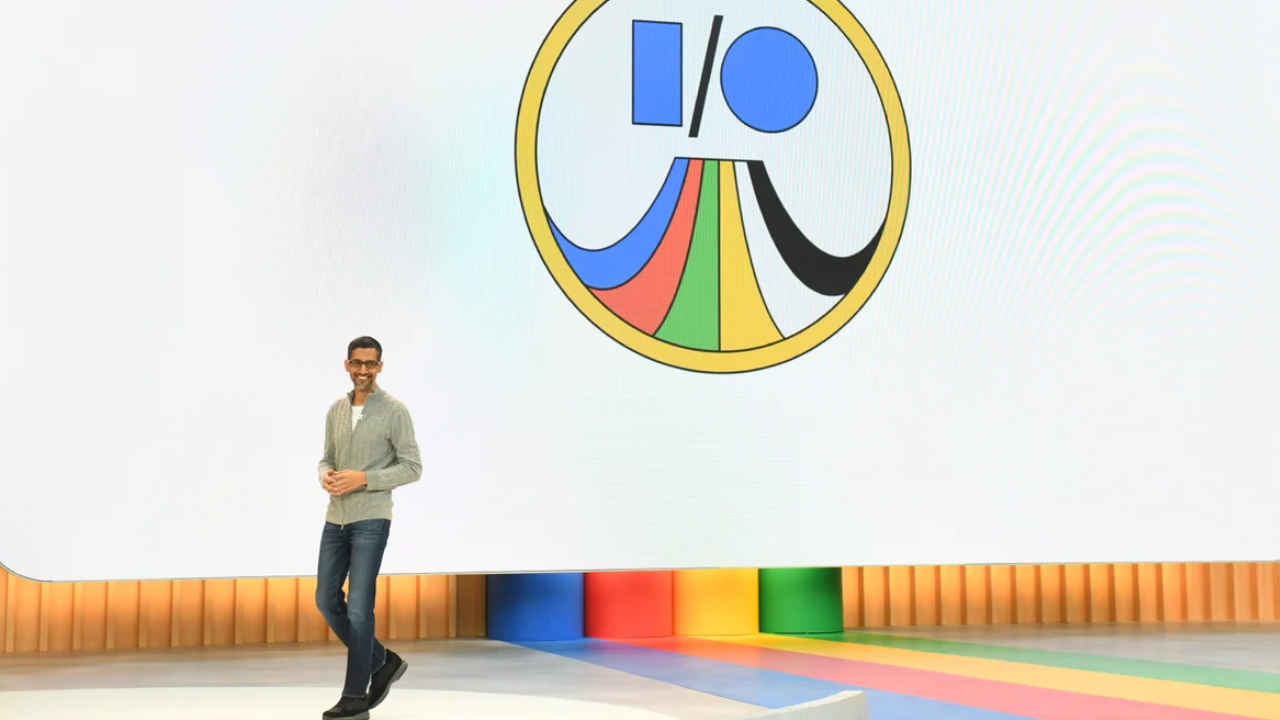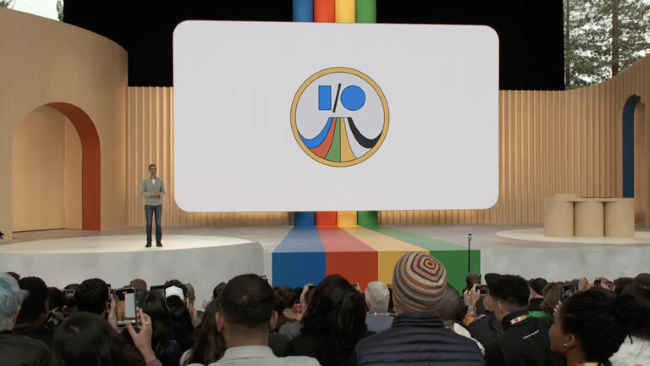Google IO 2023: Stepping into the future with Pixel Fold, ChatGPT rival and a lot of AI

This year’s Google I/O was arguably one of the most exciting ones we have witnessed in quite some time. At this year’s keynote, Google focused on Artificial Intelligence and how the company is integrating generative AI into its products. We also saw exciting stuff on the hardware side, with Google finally making its first tablet and foldable smartphone official. Here’s a small recap of what all was announced at Google’s I/O 2023 keynote.
 Survey
SurveyGenerative AI on Google products
The keynote started with Google CEO Sundar Pichai taking the stage and setting the mood for the evening. Pichai said that with AI seeing massive growth in 2022 and 2023, it is now Google’s turn to show what the company has been working on. To begin with, Generative AI integration in Google products. This includes Gmail, Google Maps, Google Photos and more.
In Gmail, Google is using generative AI to bring a new feature called Help Me Write. An extension of smart suggestions that we already see on Gmail, Google is bringing an AI-powered feature “Help Me Write,” which will write emails for users. All you will need to do is, give it a prompt, and AI will write your emails for you. There is also a “Refine” option, which will allow users to expand, re-generate, elaborate, or summarise their responses.
On Google Maps, the company is bringing Immersive View while navigating. This is basically a 3D view of your trip, showing the exact route you will be taking, with traffic, weather, AQI, and everything else you need in a 3D graphical representation of the actual area. This feature is coming to 15 cities by the end of 2023, Pichai said.
On Google Photos, the company is enhancing its editing chops, with a new feature called Magic Editor. Being an extension of Magic Eraser, Magic Editor will take editing photos to another level. We will get the ability to literally move things inside a frame, change the colour temperature, make things more detailed and sharp, and resize things in an image. All this, along with the power of Magic Eraser, will take editing to another level with Generative AI.
PaLM 2
At this year’s I/O, Google also launched PaLM 2, which is the company's new Generative AI model. PaLM 2 is Google’s most sophisticated AI model so far, and has been improved to become more helpful and more powerful to facilitate all the new AI features that Google is working on. PaLM 2 basically combines two Google projects – DeepMind and Gemini, where DeepMind is Google AI research lab, and Gemini is the latest AI foundation model. PaLM 2 is now in preview for developers to use and try out.
Google Bard
Since the focus of the evening was AI, Google couldn’t miss out on its big bet, Google Bard. Google Bard is now available for all users to try out for free, there is no waitlist anymore. It is available in 180 countries and cities in English, with Japanese and Korean languages coming soon. The company now says that Google Bard is powered by its new Generative AI model PaLM 2, and with the new update, Google is making Bard better at conversational AI. The company said that Bard has learnt over 20 programming languages to help users with software development. The company said that Bard is now equipped to not only give you the code but also help you understand these languages better.
Google has also introduced a new feature in Bard. This includes a button to export the AI’s responses to Google Docs or Gmail. So you can basically bring your Bard responses to emails or documents with just one click. Neat. Further, Bard now has dark mode also, and the company is further enhancing this conversational AI model.
For example, during the keynote, Google said that Bard will become more visual with responses and prompts. This means that the company is also adding other visual elements like images and videos to Bard's responses. Further, there are more tools coming to Google Bard in the coming weeks, along with Google Lens integration. You will also be able to use images in prompts to give Bard better context while asking for queries.
Furthermore, Bard will also be able to locate things on the map for you, and there is also an Adobe Firefly integration coming soon, which will allow Google Bard to create designs and images for you. Pretty cool.
AI Integration in Google Workspace
So using PaLM 2 and Bard, Google is bringing many AI smarts to its workspace apps. This includes a Help Me Write feature for Google Docs. Here, you can just open a Google Doc file, and ask AI to write your document for you. For example, if you are writing an essay and are stuck somewhere, just open the Bard option and type in prompts like “help me finish this essay,” to allow AI to give you options.
In Google Sheets, the company is bringing a Help Me Organise feature powered by Bard. For example, if you have data about several things and want to put it in a table format in Sheets, just ask Google Bard to do it for you! This is something that will help a lot of people who struggle with numbers and tables.
In Google Slides, AI integration will help users visualise their slides, customise them further, and even come up with presentation notes for speakers!
The trials for all these new Generative AI features begin next month starting with the US. Users will be able to try out all these AI-based features for Google Workspace apps on the revamped Labs. Just go to www.google.com/labs to try out these features starting next month.
Generative AI Integration In Google Search
Google is also enhancing its Search using AI. During the keynote, Google showed how using Generative AI with its already powerful Search will enhance the product. Users will be able to search for more detailed queries. There will be a new AI-powered result, which will appear on top of the page in a snapshot-like format. This will include all the relevant information, links, and multimedia to help you understand things in a more conversational way. Further, there will also be an option for extended suggestions, which will open conversational mode, so you can keep asking questions and follow them up with more prompts.
Generative AI in Android
Coming to Android, we saw some big announcements for Android also. For example, with Android 14, Google is focusing more on the Android ecosystem apart from AI. Here, the company said that on the back of WearOS's success, it is bringing a standalone WhatsApp app for WearOS. This app will help you write texts, respond to them, and send voice notes directly from your smartwatch.
We are also getting a new update in Find My Device. Now, you will be able to locate more devices on Find My Device, including headphones, tablets, smartwatches, and more. Further, other Android users can now help you locate your lost items. Apart from that, there is an unknown tracker alert, which will detect unknown trackers on you. This also works across all devices running on any operating system.
Google also mentioned how its RCS messaging has been a game changer, along with a subtle callout to Apple to bring RCS messaging to iPhones.
With Android 14, Android users are also getting more customisation options. This time, we will get more customisable lock screens, emoji-based wallpapers, and cinematic wallpapers, which allow users to add an immersive 3D effect to their wallpapers. There is also a new option to allow AI to create wallpapers for you. With this option, you will be able to give Google AI prompts to create wallpapers.
Google Pixel Tab and Pixel Fold are finally here!
Coming to Pixel devices, Google kept the best for the last. Apart from the Google Pixel 7a, the company also made its first tablet and first foldable smartphone official! The Google Pixel Fold and the Google Pixel Tab are the two new additions to Google’s lineup. Let us take a look at each of their specifications and prices:
Starting with the Google Pixel 7a, the only device to come to the Indian market, the Google Pixel 7a has been launched at a price of ₹43,999 (39,999 with discount) in India. The smartphone comes with a 6.1-inch OLED display with a 90Hz refresh rate. The smartphone is powered by Google's Tensor G2 SoC paired with 8GB of RAM and 128GB of internal storage. The smartphone comes with a dual rear camera setup that includes a 64-megapixel primary shooter and a 13-megapixel ultrawide angle lens. Up front, the Google Pixel 7a has a 13MP selfie shooter. There is a 4,385mAh battery on the Pixel 7a with support for 20W fast charging and 18W wireless charging.
The Google Pixel Tablet has been launched with an 11-inch LCD display. It is also powered by Google's Tensor G2 chip, and we get a 27 Whr battery, which is good for 12 hours of video playback. There is also an 8-megapixel rear camera and an 8-megapixel front camera on the Pixel Tab, and we also get an option of a Charging Speaker Dock, which converts the Google Pixel Tab into a powerful Google Home device. The Pixel Tablet is available for pre-order at a price of $499 in the US. It is not known when the Pixel Tablet will be launched in India.
Coming to the Google Pixel Fold, which is also a first from Google. On the outside, we get a nice 5.8-inch OLED display with a 120Hz refresh rate. When unfolded, the Google Pixel Fold reveals a 7.6-inch display with a 2K resolution and 120Hz refresh rate. This also uses Ultra Thin Glass with a protective plastic layer on top. This display supports 1000 nits of HDR brightness and 1,450 nits of peak brightness. This is also powered by Google's latest chip, the Tensor G2 paired with 12GB of LPDDR5 RAM and up to 512GB of UFS 3.1 storage. We also get a triple rear camera setup, which includes a 48-megapixel primary shooter, a 10.8MP ultra-wide angle lens, and a 10.8MP telephoto shooter. Further, there is a 4,821mAh battery on the Pixel Fold, which supports 30W fast charging.
